I grow a bit sad when the rosy-pink blooms of redbuds (Cercis canadensis, below) along the highway finally fade and disappear. Left behind is the lush green of the forest’s edge, occasionally punctuated by tangled masses of floriferous, but invasive Japanese honeysuckle. In some years, dogwood’s flowers will persist for a week or two longer than the redbud. Though both are native to the area with similar cultural requirements, redbuds are considerably more abundant than dogwoods. Each tree thrives in the partial sun at the margins of the forest, but redbud seeds itself about more vigorously.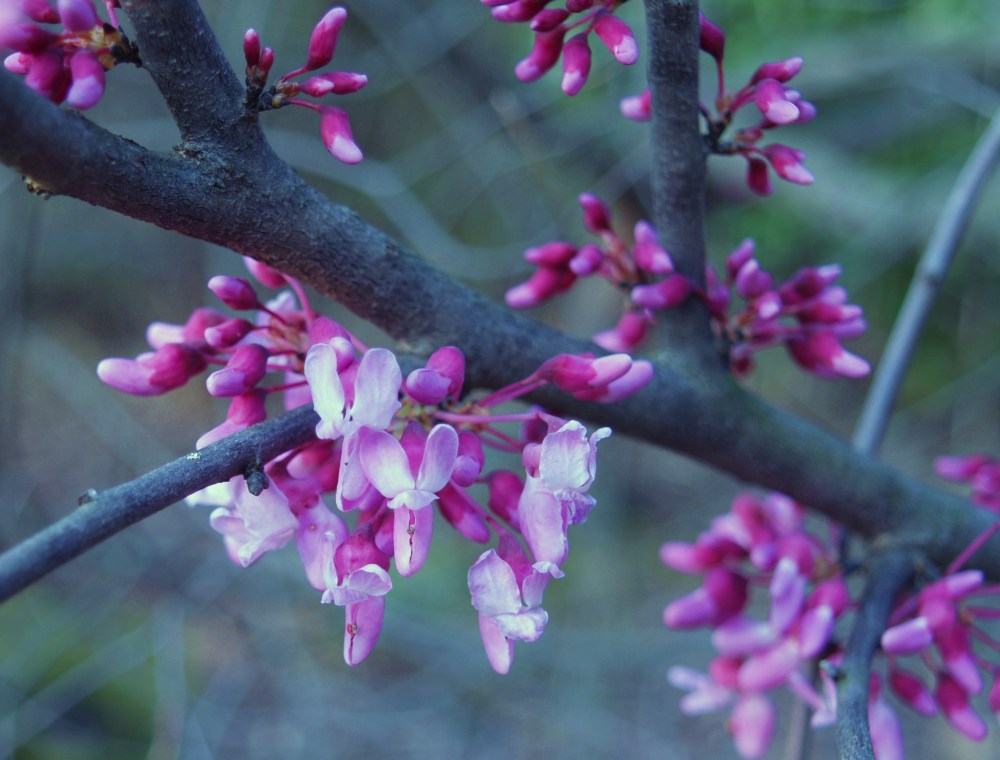
In the garden, dogwoods and redbuds tolerate nearly full sun, and will accept even the hot late afternoon sun if provided with a somewhat moist, but well drained soil (though it must not be wet). In my experience the dogwood (Cornus florida, below) will endure deeper shade than redbud, but both prefer at least some sun. In their native state redbuds and dogwoods are open growing and sparsely branched, with branches arching for the sun, but nursery grown trees are often full and densely branched.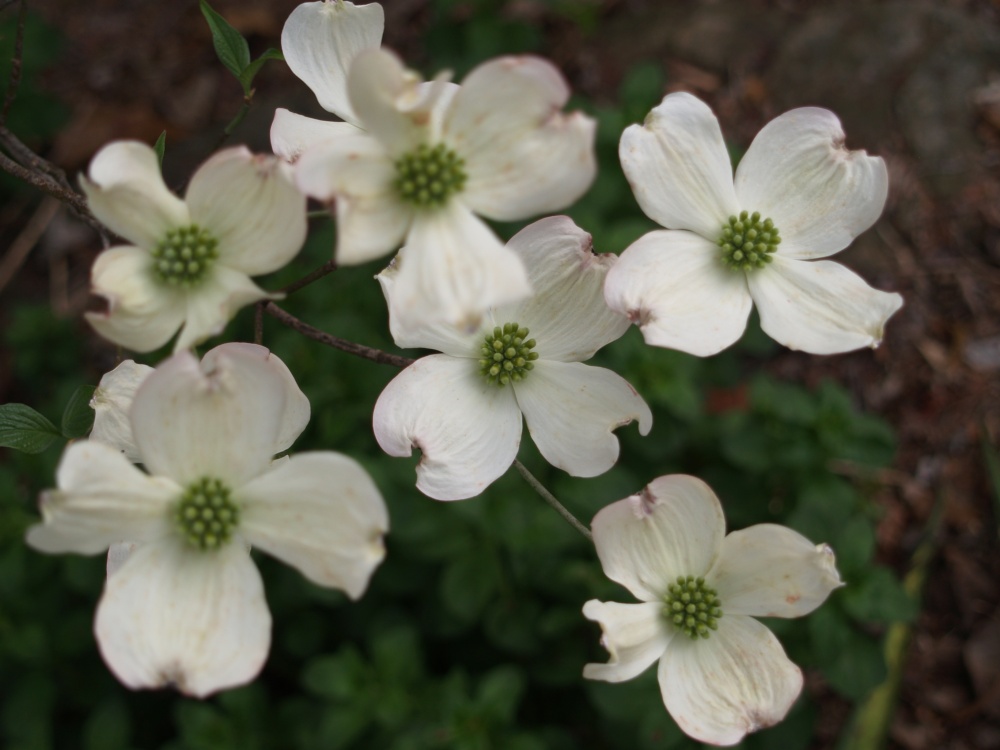
Redbud and dogwood are a bit prickly about being transplanted, but a firm rootball will usually assure a good chance for success if the trees are planted in well drained soil. Careful handling is important so the rootball is not broken, and it’s most critical not to plant either tree too deep. So, the best practice is to remove burlap from the top of the rootball to judge where the trunk meets the roots, and then to plant with the tree’s root flare a few inches above the level of the surrounding soil.
There are numerous choices of dogwoods and redbuds that are wonderful small trees for the garden. Dogwood selections ‘Cherokee Princess’ (white flowered) and ‘Cherokee Brave’ (red to dark pink flowered) are vigorous growers and less susceptible to foliar diseases that plague trees that grow from seed. Besides the popular green leafed redbud, the burgundy leafed ‘Forest Pansy’ (below) is an exceptional choice (though its foliage color fades through the summer). There are weeping versions of both dogwood and redbud (‘Lavender Twist’ is a wonderful tree), and yellow and variegated foliage, so there are plenty of choices. Certainly, at least one that is well suited to every garden.
The native serviceberry (Amelanchier canadensis, below) grows in similar conditions to dogwoods and redbuds, and will often immediately precede redbud in flowering at wood’s edge. In the garden, serviceberries are usually multi trunked, and single trunked trees will require annual removal of root suckers. The trunks are rarely substantial, and in my garden long branches arch for the sun from under the canopy of swamp maples. The delicate white flowers are quite showy, and if there is more than one tree as a pollinator the flowers are followed by edible fruits that are quickly snatched by birds.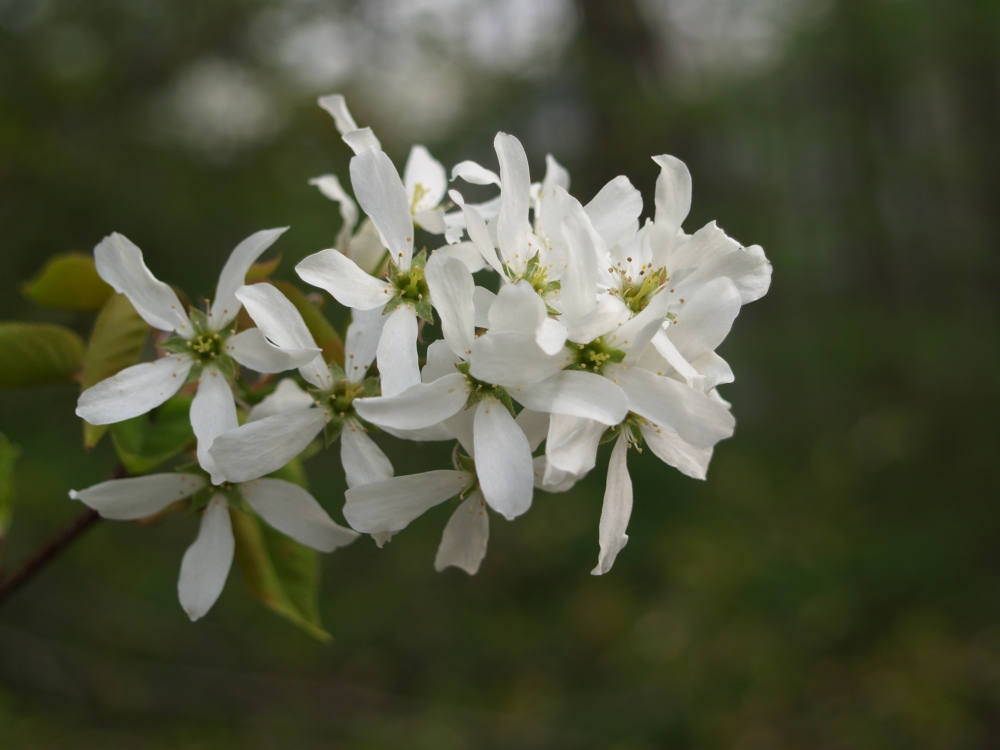
The native fringetree (Chionanthus virginicus, below) is similarly multitrunked, and in my garden I gave up trying to maintain a single trunked tree years ago after chopping away fast growing root suckers for ten years. I believe that fringetree is less common in gardens than redbuds, dogwoods, and serviceberries only because the show of abundant, ribbon-like flowers is too brief. Fringetree is not bothered by pests of any sort in my garden, and its smaller size is appropriate for almost any garden.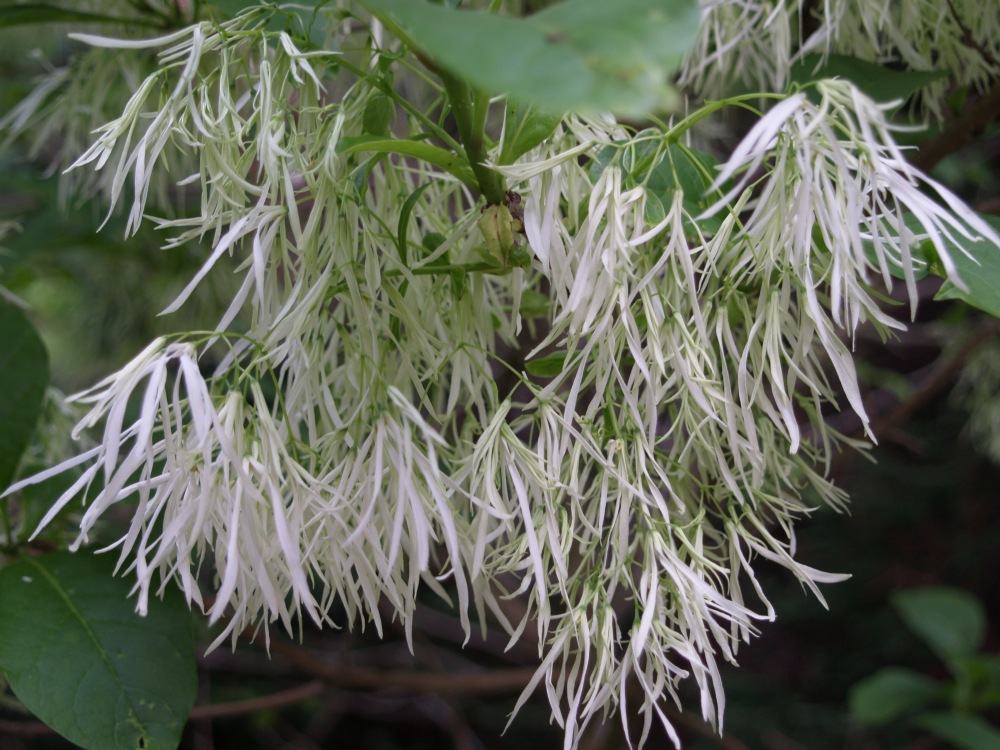
Sweetbay magnolia (Magnolia virginiana, below) blooms in late spring, after the early spring flowering Asian magnolias, and just before the majestic evergreen Southern magnolias. Sweetbay will occasionally hold onto a few leaves through the winter, but it is fully deciduous in most years. It’s flowers are notably fragrant, and the silvery-blue undersides of the leaves are splendid as they bob in the breeze. Sweetbay magnolia is another multi trunked tree, and it’s well suited to the partial shade of the wood’s edge.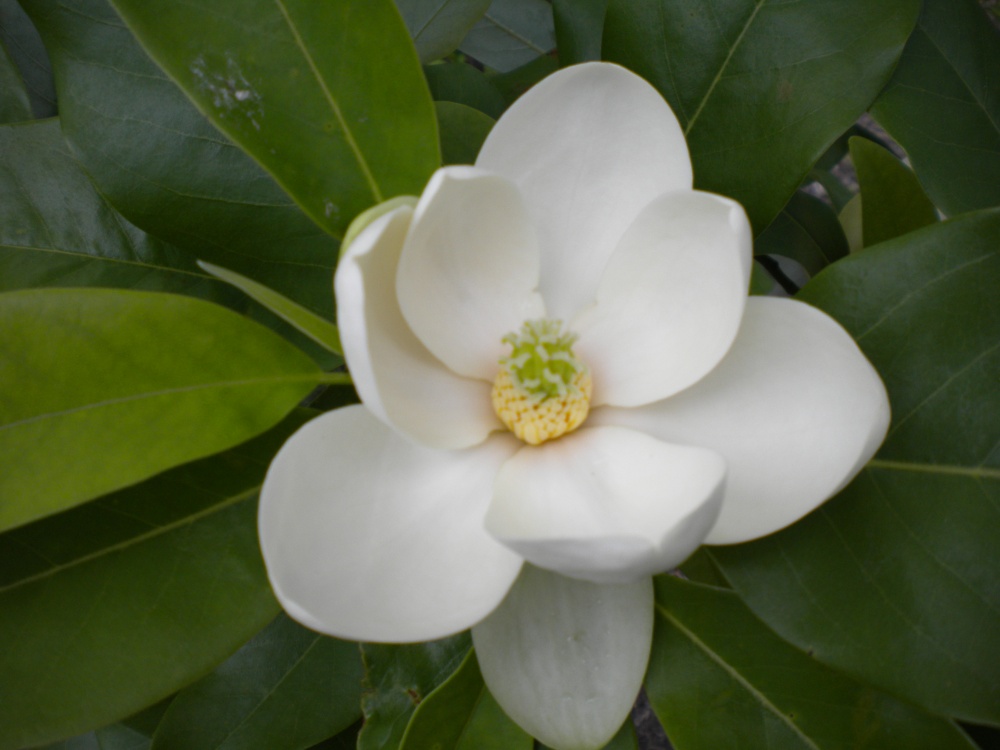
In small gardens or large, these native trees are excellent choices. All are relatively small in size, but their impact is substantial.
Enjoyed reading your post about trees for a native garden. We’ve been looking for a landscape designer specializing in using native plants at our house in Clarke County.